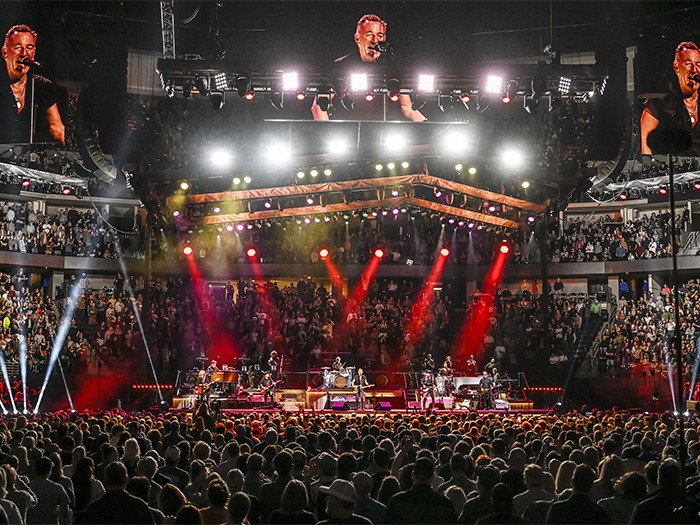Jeff Ravitz, Bruce Springsteen’s longtime lighting designer, continues to focus on the special bond between the band and the audience with his lighting design. “Bruce feeds off his audience’s energy, the same was as they channel his; that’s what has always made his shows such a personal experience,” said Ravitz. “So many people have said that Bruce brings the audience onstage. Or maybe, instead, he turns the entire arena or stadium into the performance space. That’s pretty powerful — to be drawn right into the force-field! People are singing and acting out the words to every song. Bruce sees that, and it spurs him on. So, you can see why audience lighting becomes hugely important.”
Helping Ravitz create this level of audience lighting on the current tour is the CHAUVET Professional Color STRIKE M, supplied by Christie Lites. The tour rig features 35 of the motorised strobes for indoor arena shows, and more of the IP65 rated units will be added at outdoor venues later this year.
Ravitz’s design for the tour’s 360ﹾ stage has trussing that outlines the four corners of the room. Color STRIKE M fixtures are positioned on each of these corners, while additional units face straight out into the audience from the edges of the stage.
In addition to lighting the audience, the Color STRIKE M fixtures are accenting key moments in the show with strobe effects. Calling on the intense output of his rig’s fixtures, Ravitz extends his strobing to every part of the house. “Lots of people are pretty far from the stage, whether it’s a stadium or an arena,” he explained. “So, we try to deliver the effect to the furthest corners of the room.”
At the same time, however, the renowned lighting designer is careful not to over do it with his strobe effects. “The Bruce Springsteen & The E Street Band show is not a bumpy-flashy show in general, but it is a rock show, with hard hits and accents, and just the right amount of machine-gun drum fills,” he said. “There are times when a strobe effect is just the right way to match those moments with light. We try to be judicious, so our strobing doesn’t get overused and start to lose its surprise-factor.”
This sense of balance, along with a deft touch at mixing and matching various effects, have been critical in helping Ravitz and his design team (Lighting Director Todd Ricci, Programmer Mike Appel, and second console operator Brad Brown), keep looks fresh and varied during the three-hour show, which features 25-30 songs a night.
“It’s not always that easy to avoid repeating ourselves over such an extended period, but we work hard to avoid that,” said Ravitz. “Every Springsteen song is like a mini play on its own, with a story being told. Each one gets its individual treatment. We try to use as much of the available color palette as feels right for this show, to match the vibe of the music and lyrics, and to create variety and contrast.
“We also work a lot on visual layering and dimension. Some songs are extremely full looking, with color washes being punctuated by sharp-edged light cutting through. Then, there are those moments where the lighting is more selective and sparse. Plus, we’re always revealing the band members in interesting ways. We also have lights coming from so many different directions, including up through the stage floor, to establish a statement of “directionality” for every song. This helps give every number some uniqueness.”
Of course, as varied as they are, the unique looks for each song, like the music of Bruce Springsteen itself, are always driven by one overriding concept: to reflect the close and deeply emotional bond between this legendary star and his fans.


